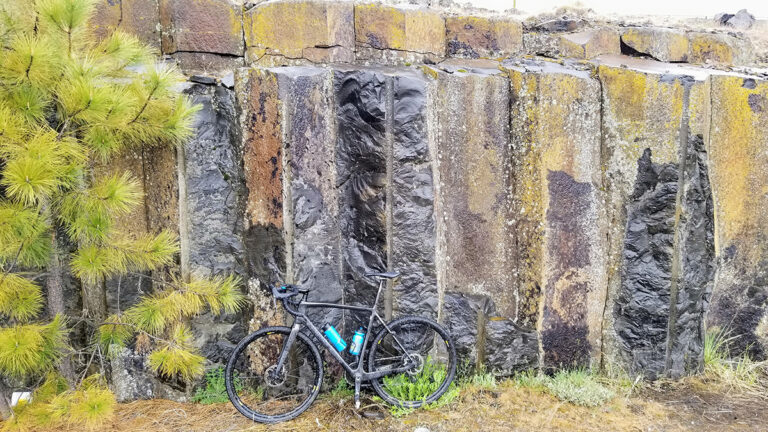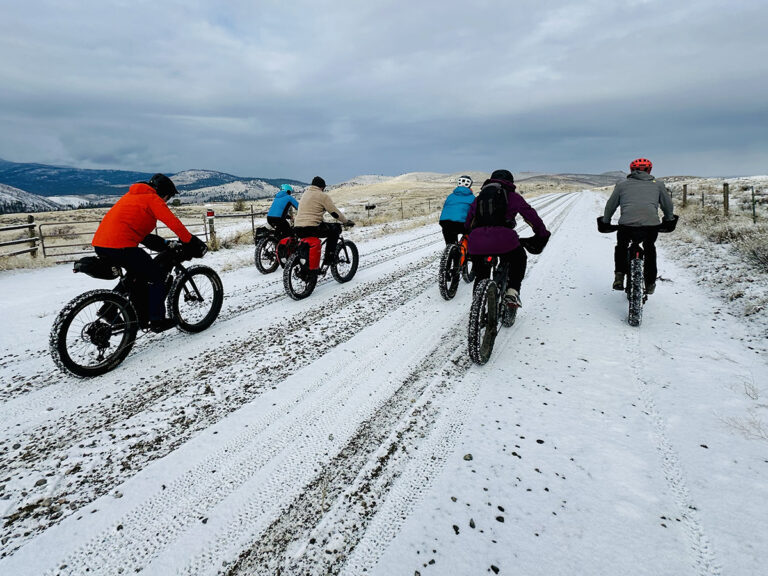Backpacking for a bachelor party? Rob Kennedy did just that with a trip to Hells Canyon with some buddies before getting married on August 27th this summer. “Nothing went as planned,” he says about the trip, but “there was an awesome river crossing. Some rafters hooked us up with smoothies, and we caught fish in our hats and put them in Doug’s water bottle. Overall, [it was] just a brilliant trip.”
Rob’s first ever backpacking trip was to Lake Serene in the North Cascades in 1998, during a weekend reprieve from his Army duties. Now he goes on a couple backpacking trips a year, saying it’s “not as much as I like, but enough to keep me out of therapy.” He also enjoys kayaking, cycling, rock climbing, snowboarding and snowshoeing.
His favorite aspects of backpacking are the “brilliant photo ops” and “the opportunity to disconnect from the daily routine to reflect on life and where I am heading,” he says.
“For the longest time the only place I went was the North Cascades, but I am starting to branch out,” he says. “Last year I climbed Borah Peak with my good friend Doug King in his quest to high-point all 50 states.”
Although familiar with 80+ pound infantry packs, Rob likes to limit his backpack to 35 pounds during the summer. “If I’m bringing climbing gear, or if I’m out in the late fall or winter I’m lucky if I keep it close to 50 pounds,” he says.
In addition to being an Army veteran (he served 1997-2000), Rob has worked as a park ranger at Riverside State Park for three years. Currently, he is a video producer for Rogue Heart Media, which provides him with opportunities to get outdoors.
“I try to work a lot with businesses and organizations that foster recreation. In doing photography and video work for them, I get to spend more time out in the field,” he says. “When business is slow I also work part-time guiding trips with Spokane City Parks. Ultimately, I love what I do—guiding trips, teaching classes and taking pictures.”
Another memorable, and challenging, trip was a backpacking-climbing adventure a few years ago—during May—at Chimney Rock in North Idaho, planned by his father and brother. “When we were driving in we hit snow three miles before the trailhead,” says Rob. “I grabbed the guidebook that my dad had been using and checked the seasons—open July-Oct. My dad was wearing shorts [and] the warmest article of clothing he had [in his pack] was his Pirates of the Caribbean PJ’s. We decided to park the truck there and hike in anyways, and it was one of the greatest trips I have ever been on.”
Here is Rob’s gear list.
BACKPACK: Osprey Kestrel 38
SLEEPING BAG: REI synthetic 0 degree
TENT: Rob prefers to use a bivy sack or hammock.
WATER PURIFIER: MSR Pump System.
STOVE: He doesn’t use one.
FOOD: He prefers snack food and frequent eating while backpacking. His favorite items to bring along are Sweet Cajun Trail Mix from WinCo, homemade jerky and fruit leather.
FOOTWEAR: New Balance Hiking shoes and flip-flops (sandals) for camp. “I went out on a late fall trip and it was going to be cold so I wore my ice climbing boots. I came home a few days later with a hernia. I picked the wrong type of footwear, but you can also have this problem by getting cheap boots. One pound on your feet is equal to 10 pounds on your back. I’m not a big fan of spending a lot of money on something because it’s a name brand, but don’t skimp on your boot purchase.”
TREKKING POLES: “After my last couple trips I have become an advocate for good quality trekking poles. On my last outing, I had a foot injury and was amazed at how much pressure is relieved by using trekking poles. I did, however, break two trekking poles on that trip, so now I am shopping for a good pair that preferably doesn’t have a twist lock.”
CLOTHING: 5:11 pants, shirt with a collar, wide brimmed hat. Cotton in hot, arid climates and synthetics everywhere else.
OTHER ESSENTIAL GEAR: Military Style Poncho (hang up for shelter, wrap around pack for river crossings, carry out your friends when they are broken); GPS (mark vehicle and only use in case of emergency); 1:50,000 topo map and compass; First Aid Kit, and survival bracelet.











